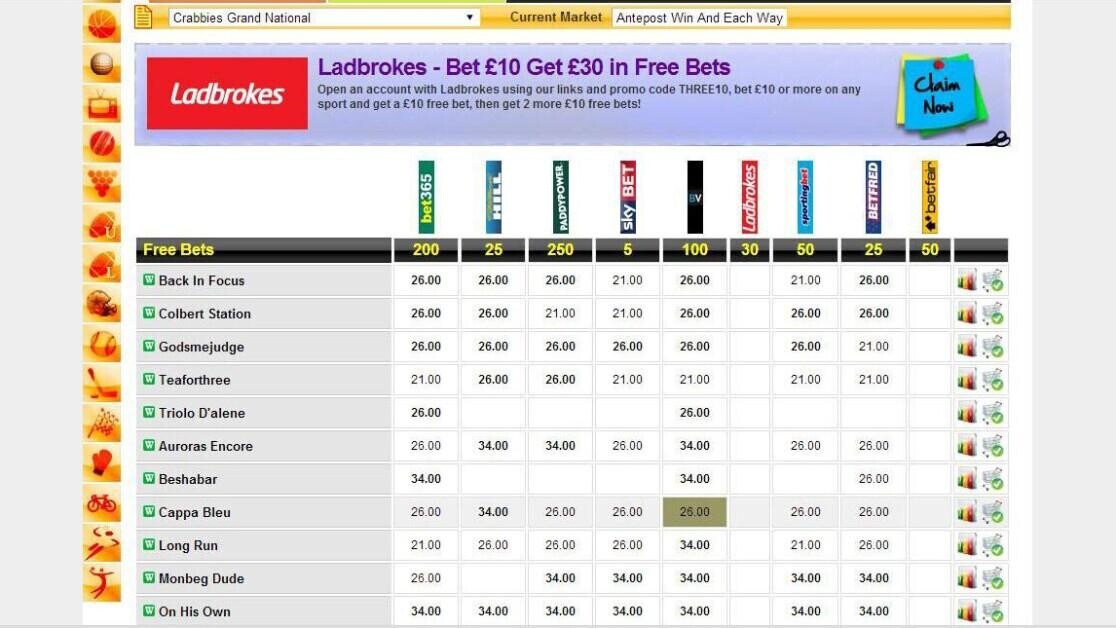
Horse Racing, greyhounds and snooker specialist with thirty years experience of writing about sport across multiple platforms. A QPR and Snooker fan
The term NAP in betting parlance is synonymous with the phrase Best Bet Of The Day.
The purpose of this blog is to provide some suggestions for readers on methods to identify a nap of the day or best bet of the day, irrespective of the sport in which the punter has an interest.
OLBG members nap of the day.
Most serious punters will have developed tried and trusted methodologies and systems for selecting potential investment opportunities within their preferred sports.
We know finding winners can be very hit and miss but research is always needed.
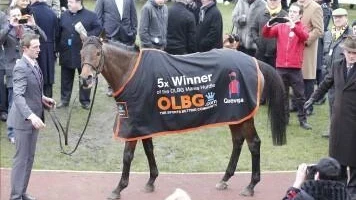
25 Lessons to Help Improve Your Horse Racing Betting.
Choosing A Nap Based On Form
This research for your nap of the day will often include an in-depth analysis of data elements, such as the individual or team's current form and ratings.
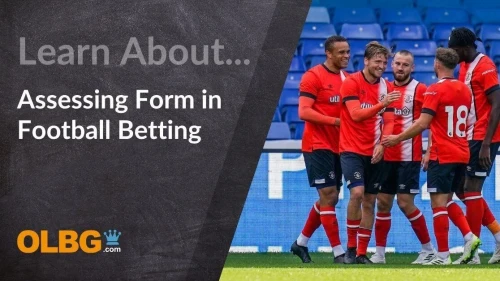
Ultimate Guide on How to Use Football Form
- Class, or historic form of the individual or team
- Head-to-head results between the participants of the event
- The previous record of the team, or individual at the venue, or course
- Suitability of the venue or course
- Suitability of the prevailing weather and ground conditions
- The starting position for the individual or team
- Historic trends for the specific event or type of competition
- Likely tactics of the individual or team
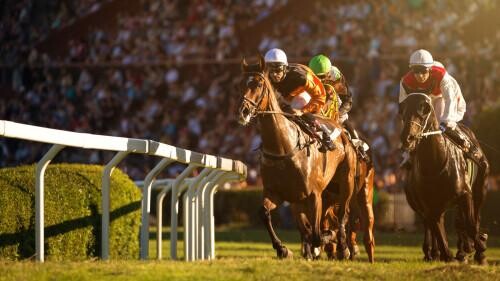
Horse Racing Form Reading Made Easy & What to Look For
Nap Methodologies
A myriad of other factors may influence whether an individual or team is worthy of consideration for a bet that day.
Once the punter has applied their preferred methodologies to the various sporting events of the day, they are likely to have produced a shortlist of potential bets.

Using Statistics and Trends in Betting: A Strategic Guide
They may believe that they have finished the task and will place a bet on each selection without further analysis.
However, most shrewd punters are likely to undertake further analysis to ascertain the answers to the following three questions:
- 1. Does each of the selections warrant an investment?
- 2. What stake should be wagered on each selection?
- 3. Which selection should be the NAP/Best Bet Of The Day?
The stated purpose of this blog is to provide suggestions on methods that may be used to identify the punter's NAP/Best Bet Of The Day,
In my opinion, they should be applied before the placement of a wager on any event, as without undertaking further analysis, it will be impossible to determine which of the shortlist of selections should be elevated to the highest status. (nap)
I will discuss these questions in turn and provide a short case study.
This will highlight the benefits of further analysis rather than considering that each potential selection should be backed without further thought.

An Essential Guide to Picking the Right Bets
Do Each Of The Selections Warrant An Investment?
This is often one of the most challenging questions for punters to answer subjectively.
Many will have spent significant time and effort analysing the available data to determine the most likely outcome of a particular race or event.
Media pundits often overuse the term 'value' when discussing a competitor's chance of winning a specific race.

Master the Art of Value Betting and Maximize Your Winnings
Every punter who wishes to make a long-term profit from their wagers should always consider whether their investment offers value and if not, they should seriously consider whether it is wise to place that bet.
In many cases, the punter will have developed an emotional link with that particular outcome during the analysis process and will be keen to place a bet.
However, keeping the betting bank intact would be better than placing a wager on an outcome where the odds available to the punter are less than the true chance of the outcome occurring.
To put it bluntly, how many of us would be prepared to wager our hard-earned cash on the toss of a standard coin, where the odds on offer for either head or tails being the outcome were 5/6?

Best Online Bookies For Your Betting Using Implied Probability Calculations
We know that the chance of either heads or tails prevailing is 50% either way, so why would we accept 5/6, which suggests that either outcome has a 54.5% chance of occurring?
Likewise, they should not be prepared to back a particular outcome of an event at 7/4, which represents a 36.4% chance of occurring, when they believe that the true chance of being successful is 33.3%, or odds of 2/1
This is fine in theory, but the biggest problem many punters face is assessing the true odds of a specific outcome occurring accurately.
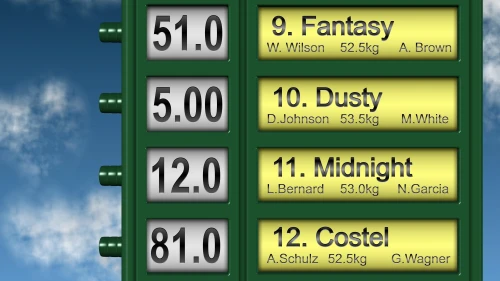
Odds Converter | Fractional to Decimal Odds & Probability
Celtic v Kilmarnock Example
The Racing Post football journalist Kevin Pullen goes into great details when deciding on and explaining his bets.
The headline was "Celtic games will not always supply high scores".
"At the odds, it is worth betting on a modest number of goals today when Celtic receives Kilmarnock.
Back under 3.5 at 23-20 with Coral.
18+ Eligible UK+IRE players. Paypal & some deposit & bet types excl. Min first £5 bet within 14 days of account reg at min odds 1/2 = 4x £5 free bets. Free bets valid for 7 days, stake not returned. No cash-out, restrictions & T&Cs apply.
#ad. 18+, gambleaware.org, T&Cs Apply
Glasgow Celtic home games this season have produced some exceptional scores.
And as you would expect, they fired in most of the goals.
Twice, the aggregate score hit six, once it reached five and twice, it was as high as four.
The average number of goals per game has been almost four, that is unusual.
Over the previous 15 seasons, the average number of goals in Celtic's Scottish Premiership home games was just over three.
That excludes games against Rangers, who, before their financial meltdown, had a budget that enabled them to compete for honours with Celtic.
Old Firm games yielded low scores more often.
During the previous 15 seasons, 63 percent of Celtic's home games against opponents other than Rangers featured fewer than 3.5 goals.
Kilmarnock games have generated a slightly higher-than-average number of goals for about half a dozen seasons. Even during this time, however, there have been fewer than 3.5 goals in four of their seven fixtures at Celtic Park.
Celtic can spend about as much on players as the other 11 Premiership clubs.
Leigh Griffiths, Kris Commons (unwell today), Stuart Armstrong, Nir Bitton, and James Forrest have been running opposing defences ragged.
Celtic's home games during the rest of the season may also average almost four goals. If that happens, odds of 23-20 for under 3.5 goals today will not represent value for money, and the bet will probably lose.
It is likely that things will settle down a bit and that between now and May there will be more low scores to add to the 2-0 defeat of Ross County and a goalless draw with Hearts.
And that is why it is worth backing under 3.5 goals today between Celtic and Kilmarnock."

Over 2.5 Goals Betting and Statistical History
From the level of detail supplied by Kevin Pullen, he is a punter who takes time to analyse potential wagers comprehensively and is highly unlikely to commit to a bet where the odds on offer are worse than the chance of his chosen outcome occurring.
In many respects, the outcome of the bet is immaterial in the context of this blog, as the quote has been included to highlight the need for punters to assess whether their selection is worth backing,
However, Kevin's followers would have been very content with the 0-0 draw at full-time.
Clearly, any punter with access to similar data regarding their chosen sport and who uses the information wisely can ensure they are making value wagers.
Betting Percentages
However, many punters cannot access this level of information and, therefore, need to find an alternative method for assessing whether their potential selection offers value and the chance of long-term profits.

An Essential Guide to Picking the Right Bets
There are many possible options for assessing value, many of which I will have yet to encounter during my punting exploits. In the past, I have used the following three methodologies, which may assist readers.
Some of the most intelligent racing enthusiasts produce their own betting forecasts for the races in which they may decide to invest financially.
To produce a personal betting forecast for a race, the punter will assess the chance that each competitor has of winning the event and will express this as a percentage
so, the sum of the chances for all runners in the race equals 100.
For example, the punter may produce a personal betting forecast for a 5-runner race as follows:
| Selection | Runner | % |
|---|---|---|
| Horse | A: | 50% |
| Horse | B: | 33% |
| Horse | C: | 9% |
| Horse | D: | 5% |
| Horse | E: | 3% |
| 100% |
Which equates to approximately the following odds for each contender
| Selection | Runner | Odds |
|---|---|---|
| Horse | A: | Evens |
| Horse | B: | 2/1 |
| Horse | C: | 10/1 |
| Horse | D: | 20/1 |
| Horse | E: | 33/1 |
To assist punters, tables expressing probability regarding betting odds are widely available.
These odds represent the minimum odds at which the punter believes a bet on each contender would break even in the long term.
However, the bookmaker will be betting to a bigger percentage to include a profit margin (known as an overround), which, in the case of this race, we will assume to be 10%, which means that the aggregate odds on offer will add up to 110%, as follows:
| Selection | Runner | % | Odds |
|---|---|---|---|
| Horse | A: | 55.50% | which equates to 4/5 |
| Horse | B: | 28.50% | which equates to 5/2 |
| Horse | C: | 12.50% | which equates to 7/1 |
| Horse | D: | 8.50% | which equates to 11/1 |
| Horse | E: | 5.00% | which equates to 20/1 |
| 110% |
Based on this example, the bookmaker offers worse odds than the punter would be willing to accept on 4 of the five contenders.
The punter would only place a wager on the race if Horse B had been the original selection, in which case he would secure odds of 5/2 for a runner believed to be a 2/1 shot.
This is an effective method of evaluating value in a specific race, and I am sure that a similar process could be developed for most other sporting events,
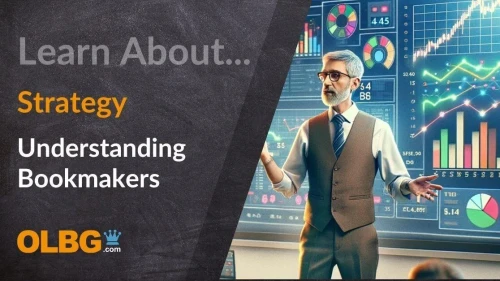
How Bookmakers Work and Create Odds
Time Pressures When Selecting A Nap
In my opinion, there are a couple of pretty significant drawbacks which require careful consideration:
Firstly, the punter must have a high degree of experience and knowledge to accurately assess each contestant's chance of winning and be confident in their abilities to produce an accurate betting forecast.
Secondly, completing this task for an event with only five contestants would be manageable.
Imagine the time required to assess each contestant in the Grand National, where the maximum field size is 40 runners, or produce personal betting forecasts for 5 or more events in one day.
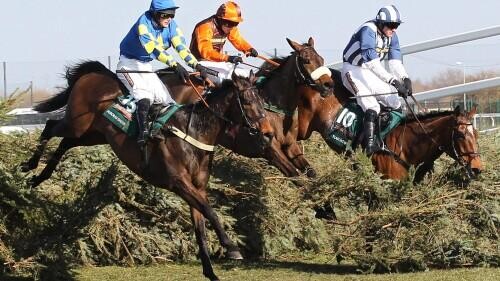
Grand National Preview, Tips, Runners & Trends (Grand National Meeting)
However, a couple of easier options can be used 'off the shelf' in a similar way, and they only require a little bit of time.
The first option is to use the betting forecast provided by the Racing Post or another provider that produces reasonably accurate forecasts for every race.
.At a glance, most punters should be able to compare the forecast odds with the prices on offer with the bookmaker or betting exchange
They will be able to calculate whether they can place a bet at odds that represent value.
However, there are a couple of drawbacks to using such betting forecasts. They are produced the day before the race and do not consider late-breaking news such as non runners or going changes.
The forecast may need to be recalculated, but this task should be manageable, especially compared to the time and effort required to produce a personal betting forecast from scratch.
The second off-the-shelf option is available to punters through the various odds comparison sites that can be accessed via the Internet.
Numerous different methods can be adopted when using the data available on odds comparison sites.
The simplest is to identify the median (average) odds for the selection in an event and then back it at the best odds available.
| Horse | Odds | Odds | 0dds | Odds | Odds | Odds | Odds | Average Odds |
|---|---|---|---|---|---|---|---|---|
| Dequinto | 4.5 | 4.3 | 4.33 | 3.5 | 4 | 4.33 | 3.75 | 4.1 |
So in the above market with the average 4.1 you would back the selection with the bookmaker who has odds of 4.5.
The main problem with this method is that whilst it ensures that the punter always obtains the best odds for their selection, which is a step in the right direction in the journey towards ensuring value betting, there is no process to determine whether that price is better than the percentage chance of the selection winning the race.
This problem can be resolved by comparing the best odds on offer for the selection against the betting forecast published in the media, as I detailed earlier when discussing the production of personal betting forecasts.
However, my preferred option, which works for all sports, not just horse racing, is to identify the mid-price on the odds comparison site, from which I then calculate the percentage chance of winning that those odds represent.
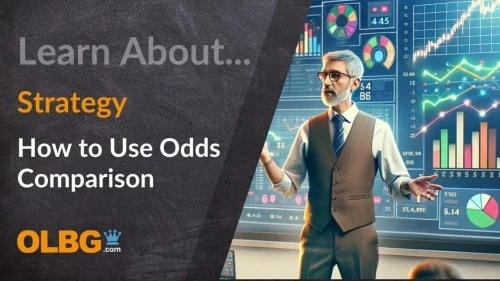
The Power of Odds Comparison: Ultimate Betting Odds Strategy Guide
I then deduct a predetermined percentage from this figure depending on the sport and number of contestants due to participate in the event, which in reality represents the percentage chance of the contestant winning the event.
The resultant calculated percentage can then be turned back into betting odds, which represents the minimum odds at which the punter should be prepared to place a wager
If the minimum acceptable odds cannot be bettered on the odds comparison site, the punter should not place a bet. However, if the best odds available on the site are higher than the minimum acceptable price, the punter should place the bet at the best odds available.
Here is an example which may help to explain this process:
The median odds available for a contestant on the odds comparison site is 3/1.
This represents a 25% chance of the contestant winning the event. If the predetermined deduction is 20% of the original percentage chance, then 25% minus (25% x 20/100) equals 20%.
This represents the minimum acceptable odds of 4/1, so the punter should only place a bet on the selection if the best odds are better than 4/1.
What Stake Should Be Wagered On Each Selection
I am often amazed that so many punters appear to place random stakes on their selections.
This often results in them making an overall loss in the long run.
This phenomenon is often best observed in high-street bookmaking shops,
Here punters place bets based on the amount of money they have in their pockets at the time of placing the bet.
This leads to them placing larger stakes when they are flush and lower-value bets when they have less cash.

The Best Staking Plans Revealed! | Unlock Your Betting Success:
Lack of consistency in the value of bets staked is one of the main reasons why many punters return an overall loss,
With a bit of self-control, they should be able to reduce the loss at least and even make a profit.
For this blog, I shall presume that readers have already set aside an affordable betting bank and are aware of the need to ensure that the value of their betting bank is sufficient to cope with the inevitable losing runs.
Many punters that have adopted a structured approach for their betting will place the same amount on each selection,
This is a simple and relatively safe staking plan and is the method used by OLBG to determine the winners of their excellent monthly betting competitions.
Another simple staking plan that punters often use is to place a predetermined percentage of their betting bank on each selection, which means that the value of their bets will increase after they select a winner but decrease after a loser.
Again, this is a relatively safe method, as the betting bank will never be wiped out during a significant losing run.
Still, unfortunately, lower stakes placed on subsequent winning bets make it very difficult for the punter to bring the betting bank back to the level before the start of the losing streak.
Punters using both of these staking plans are acceptable.
Still, there are some interesting alternatives that the more adventurous punter may wish to consider.
In theory, it makes sense to place larger bets on selections that offer the most value in terms of the odds that can be secured compared with the chance the selection has of winning the event, as derived by the various methods in the previous section of this blog.
One of the best options for maximising the benefit of knowing the level of value that can be attributed to a specific wager is to deploy the Kelly Criterion, which many readers will have come across in the past.
John Kelly was a telephone engineer, who wrote a paper in 1956 which suggested that someone in his position could place a delay on the telephone line that linked his local betting shop to the outside world, which would enable the engineer to know the result in advance of the betting shop.
He could place a no-lose wager on the winner.
In this scenario, John Kelly suggests that the engineer would wager 100% of his betting bank on the winner of the event,
There was no chance of the wager losing, and then goes on to determine the percentage of the betting bank that should be wagered when the punter believes that they can secure differing advantages based on the odds available against their estimate of the chance of their selection winning.
The mathematics to determine the percentage of the betting bank that should be wagered can be simplified as follows:
Calculate in percentage terms the chance that the selection has of winning the event.
- Multiply this figure by the competitor's actual odds.
- Subtract the probability of the competitor losing.
- Divide the result by the competitor's actual odds.
Here is a worked example based on a selection which is believed to have a 25% chance of winning an event but can be backed at odds of 4/1:
- Chance of winning: 25
- Multiplied by current odds of 4/1 equals 100
- Subtract the chance of losing: 75 equals 25
- Divided by current odds of 4/1 equals 6.25%
- The punter should, therefore, wager 6.25% of the betting bank on this selection.
However, there are a couple of potential issues which must be considered with this method,
The resultant percentages that the punter should wager can be significantly large, as in the case of a contestant with a 60% chance of winning who is available at evens and requires a wager of 20% of the betting bank.
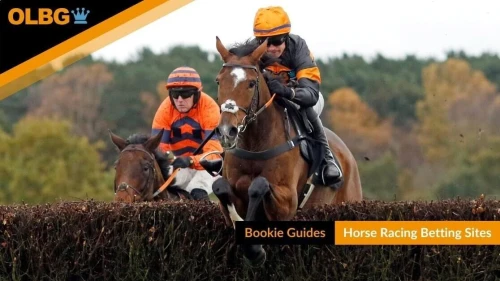
Best Horse Racing Betting Sites 2025
The punter needs to be confident of their ability to assess the chance of their selection winning, as a relatively small error can have a profound impact on the size of the wager.
In the above example where, a reduction in the selections chance of winning to 55.6% would result in the bet size reducing to 11.2% of the betting bank
One method that can be used to reduce the risk of the potential issues mentioned above would be for the punter to divide the size of the wager by, say, 50%.
This will reduce the possible winnings but also reduce the risk of wiping out the betting bank if a sustained losing run occurs.
However, my preference is to calculate the percentage of the betting bank but then use that figure to determine the value of the bet as follows:
- 0.0 to 4.9%: no bet (provides an additional margin in favour of the punter)
- 5.0 to 9.9%: 1 pt
- 10.0 to 14.9%: 2 pts
- 15.0% or more: 3 pts
This method again reduces the potential profits from winning bets but also minimises the risk of significant losses, whilst still offering the punter the opportunity to differentiate between good, very good, and exceptional value wagers.
There are plenty of alternative staking plans that punters may consider using,
But the most important point to remember is that if the publicised returns through using the plan appear too good to be true, then the plan probably rates as a high-risk strategy,
This may jeopardise the betting bank if a set of results go against the punter.
Which Selection Should Be The NAP/Best Bet Of The Day
Once again, many punters select their naps based on the misguided impression that their flagship bet of the day should be the selection which has the best chance of winning and will often nap their shortest-priced selection.
They believe that they should strive for a high strike rate with their flagship bet of the day.
Therefore, they will nap and often place their largest bet of the day on a selection that may not warrant a bet if the odds available are shorter than the chance of the selection winning the event, or if the selection does offer value, it may not be the best value selection of the day.
However, punters who have calculated whether their selections warrant a bet and, if so, the level of stakes that should be placed on each bet, should have little difficulty identifying their nap of the day, as it should be the selection that offers the best value and hence on which the biggest bet is to be placed.
A cursory look at the Racing Post Horse Racing Naps table will invariably show that the most successful tipsters in this competition tend to have a much lower strike rate than their more prolific rivals.
Still, by tipping value selections, they record a bigger stake profit over the competition duration.
A similar situation is often seen when reviewing the historic monthly OLBG Horse Racing Naps and the monthly tipster tables for other sports, where value seekers often outperform punters with high strike rates.

Perhaps there is an element of luck involved in individual cases; but the weight of evidence suggests that over a prolonged period, value seekers who also employ a structured staking plan will outperform punters who concentrate on achieving a high strike rate but take little or no account of whether their selections warrant a bet and who employ a random staking plan for their wagers.
The following true story will provide further evidence.
A Short Case Study
Approximately 25 years ago, I worked in a small team with four colleagues on a major project.
The project required a level of mathematics that far exceeded our combined capabilities.

Therefore, a consultant who was, in my view, a mathematical genius was added to the team. At the end of the week, on Friday, the whole team, including our new recruit, went out to the local Public House for a quick drink after work, which was the regular custom for the team.
All of the regular members of the project team were devoted sports fans who especially enjoyed betting on horse racing, so the conversation during our Friday evening drinking sessions tended to gravitate to which horses we thought would win the following day.
This proved to be a delightful end to the working week, but we were a little concerned that our new recruit, who I must point out was a young lady with no interest in horse racing, would take to our Friday evening ritual.
Indeed, for the first couple of weeks, she said very little during our discussions, but despite our protestations that we would be happy to chat about other subjects,
She told us to continue to discuss horse racing, as she found the topic interesting.
On the third Friday, after a few drinks, our new colleague amazed the rest of the team when she stated that she would be able to make a more significant profit than any one of us, despite knowing little about horse racing.
So we took up the challenge and each of us handed over £20 to her to provide her with an initial stake with which to bet.
Our only stipulation is that she explains the reasoning behind her bets for the following Saturday during the Friday evening drinking sessions.
The following Friday, our new colleague joined us for a drink armed with copies of various weekly horse racing publications,+ the Evening Standard, which covered the following day's racing and forecast odds.
She then presented us with a list of horses that the tipsters had selected for the races on Saturday.
She explained, using probability tables and the currently available odds, which of the tipsters' selections warranted a bet and, using the Kelly Criterion, the bet size that she would place on each selection.
She made a small profit on the first Saturday, but after a month, the initial £100 betting bank increased to just over £200, even though our colleague had backed only five winners from 35 bets placed.

Make Money Betting, Have a Betting Plan and Be Businesslike
It was a similar story the following month. By the third month, the rest of the team had stopped backing the runners we thought would win each race and instead followed the selections of our new recruit.
The discussions on Friday night had also subtly changed in so much as we stopped discussing which horse was the most likely winner of the race and had started to debate which of the various tipster's selections offered value at the odds available.
We all became converts, quickly learning techniques similar to those discussed earlier in this blog. We were sufficiently adept at identifying value to continue making our betting pay.
Despite the fact that the project was completed a couple of months later, the team was split up, with our new recruit leaving at the end of her temporary contract.
At her leaving party, she admitted to the team that her father owned a provincial Casino and that she had completed her thesis for her degree at university on the probability factors associated with gambling on Casino games,
So, whilst she knew nothing about horse racing, she fully understood the theory of value betting.

This was a lucky coincidence for me and my 4 fellow team members.
Nap Summary
Irrespective of the punter's choice of sport on which to bet, there are several golden rules that they need to consider before placing a wager on their selections, which in turn will automatically identify the Nap/Best Bet Of The Day, namely:
- 1. What is the method for selecting the contestant as a likely winner?
- 2. Does the selection warrant a bet/do the odds offer value?
- 3. If so, what stake should be placed on the selection?
- 4. Which selection offers the best value and should be napped?
I am sure that plenty of punters will be deploying alternative methodologies to answer the above questions.
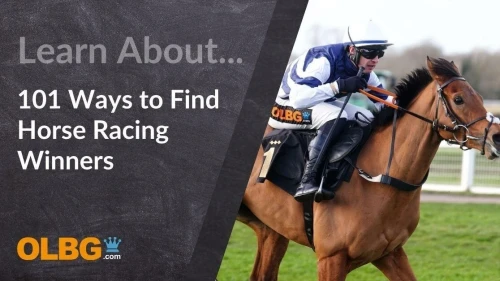
101 Ways to find Winners in Horse Racing
Those readers who wish to try out some of the ideas which have been discussed, why not apply the tests to the Horse Racing Naps that appear on the OLBG tips page,
You can then ascertain whether the most tipped naps offer value based on the above ideas.
If horse racing is not your favourite sport, you can undertake a similar exercise using one or more OLBG tips pages covering other sports.
Better still, why not have a go if you haven't entered the monthly OLBG horse racing naps competition.
Nap Competition
They are free to enter, and plenty of great cash prizes will be won each month.
Finally, once you are confident that your methods are effective, apply them before placing your wagers with the bookmakers and on the betting exchanges.

Betting Exchanges UK - The best sites in the UK
I hope that readers find this blog interesting.
Please feel free to provide feedback (good or bad) or comments below
If you wish to share details of the methods you use to assess your selections I am sure that other readers would find them helpful.
